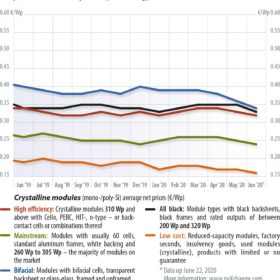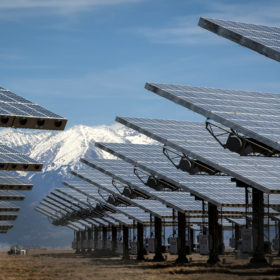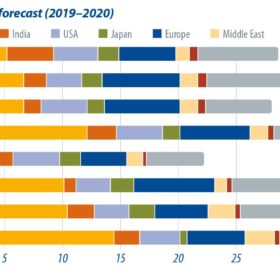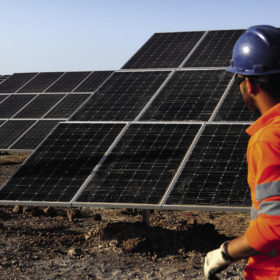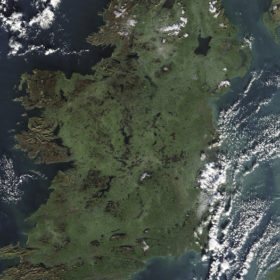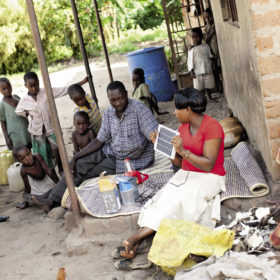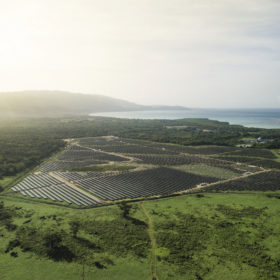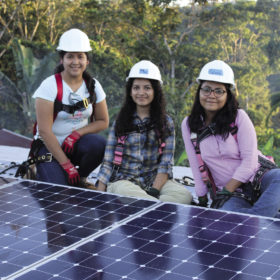A solar south
The solar story of the past decade has been defined by fast-falling costs – a remarkable achievement of which the industry can be rightly proud – as highlighted by the World Bank in a recent energy access update (pp. 22-24). However, a narrative that PV benefits the few at the expense of the many has been a difficult one to shake.
V for recovery
Solar stocks outperformed the broader market in June. High demand for polysilicon amid the expansion of wafer production – as well as expectations for an economic recovery in the second half – drove solar stocks upward, writes Jesse Pichel of ROTH Capital Partners.
A new boom, or the same old?
The Covid-19 crisis has left the solar market relatively unscathed, and in Germany, at least, it looks as if the final hurdles holding back an urgently needed PV boom have been cleared. In the evening hours of June 18, the uncertainty finally lifted, as the German parliament decided to eliminate the 52 GW cap on solar PV. Although the corresponding decision in the second chamber of Germany’s legislature, the Bundesrat, was still pending at press time, this is usually a formality. Still, the industry has reacted cautiously to the good news.
Emerging markets and innovation: Twin pillars of the solar tracker market
Global solar tracker shipments reached new record levels in 2019, exceeding 31 GW, up 55% year on year. Exceptional demand in the United States – as well as multiple gigawatt markets in Brazil, Mexico, Chile, Spain and Australia – helped propel the market to new heights, writes Cormac Gilligan, associate director at IHS Markit.
As countries reopen, market recovery begins
As the Covid-19 pandemic gradually eases, countries around the world have slowly begun to relax lockdown measures. Some countries have also launched varying types of economic stimulus to support the solar sector. In contrast to others, the Chinese market is stable, as the country has had some success in controlling the virus.
Terawatt scale by 2022
The solar sector is no stranger to breaking records. Perhaps the most impressive figure to emerge from SolarPower Europe’s new ‘Global Market Outlook’ is that the global solar sector will reach terawatt scale by 2022 – just four years after the 500 GW milestone was reached. Michael Schmela from SolarPower Europe sets out the reasoning behind this and other key findings in the report.
Three factors for success in the Irish solar market
Recent years have seen an explosion of installed PV capacity across the European Union, fueled by the well-documented rapid reduction in technology costs and favorable subsidy regimes in many jurisdictions. However, one corner of Northern Europe remains relatively untouched by the solar revolution, writes Adam Sharpe of Everoze. The Republic of Ireland currently has the second-lowest amount of installed PV capacity in the European Union, at just 36 MW by the end of 2019.
Universal energy access just got harder
This year marks a uniquely critical juncture on the road to universal access to affordable, reliable, sustainable, and modern energy. The massive disruption caused by Covid-19 complicates the outlook to 2030, which is the target date for reaching UN Sustainable Development Goal (SDG) 7, writes Rohit Khanna, manager of the World Bank’s Energy Sector Management Assistance Program.
Solar heads south
This year, pv magazine’s annual In Conversation special turns its focus to the Global South. We have gathered a series of interviews from regions the world over that illustrate how solar is making positive contributions across the Global South, from bringing cheap, reliable power to energy-poor communities, to powering the development of emerging economic giants.
Expanding access: solar, water, and cooking
Jenean Smith is the senior director of International Programs at Grid Alternatives, a U.S.-based philanthropic organization that brings solar access to vulnerable homes and communities through local volunteers and job trainees doing installations. Smith started a non-profit called Power to the People with a locally staffed office in Nicaragua in 2008, before it was acquired by Grid Alternatives in 2014. Since then, the organization’s International Program has expanded its operations into Nepal in 2016 and Mexico in 2017.


